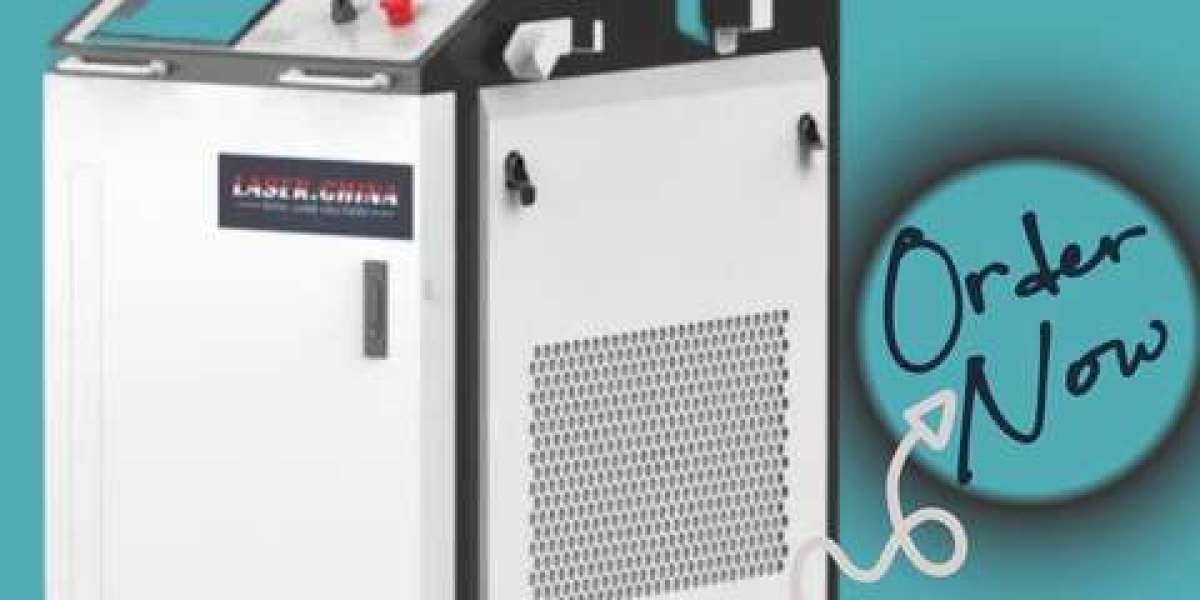In this article, we’ll take a deep dive into how laser metal cleaner actually works, why the results sometimes appear deceptive, what factors influence real surface cleanliness, and how to tell if your equipment is up to the job or just offering surface-level results. If you’re in fabrication, manufacturing, repair, or restoration, this breakdown could redefine how you look at your cleaning process.
Understanding the Science Behind Laser Metal Cleaning
Before jumping into misinterpretations, it’s important to understand what a laser metal cleaner is designed to do.
Laser cleaning relies on the principle of laser ablation—a process where a highly concentrated laser beam is pulsed onto a surface. The beam heats and vaporizes unwanted material—such as rust, paint, or oxide layers—without harming the base metal. The key here is precision. The laser wavelength is absorbed by contaminants but reflected or ignored by the underlying metal, allowing selective removal.
However, when the calibration is off, or when lower-quality units are used, this mechanism doesn’t always perform as expected.
When Clean Isn't Really Clean
To the naked eye, a freshly treated metal surface might look pristine after a laser pass. But that’s where the tricky part comes in. In many low-end or misused laser systems, the beam may only burn or carbonize the surface impurities instead of removing them. The result? A darker, shinier appearance that suggests cleanliness—but in reality, the underlying contaminant layer remains.
Here’s what often leads to this deceptive effect:
1. Improper Focal Length
Each laser metal cleaner has an optimal focal point where energy concentration is at its peak. If the nozzle is too close or too far from the surface, the beam disperses. Instead of vaporizing contaminants, it scorches them—leaving behind residues and even carbonized layers that appear darker, not cleaner.
2. Incorrect Pulse Parameters
Laser cleaning is not just about pointing and shooting. The frequency, energy per pulse, and scanning speed all impact the effectiveness. If the pulse energy is too low, contaminants are heated, not removed. This results in oxidation and staining, not true cleaning.
3. Uncalibrated Machines
Some generic or uncalibrated laser metal cleaners claim to work on “all metals,” but offer poor feedback or control systems. Without the ability to fine-tune the energy delivery, users often overcompensate by increasing exposure time, which can discolor or warp metal surfaces without lifting away dirt, corrosion, or coatings.
Real-World Evidence: How Industry Technicians Test Cleanliness
Industrial quality assurance never trusts visual inspection alone. Whether you’re cleaning aerospace-grade aluminum or restoring rusted machinery, professional technicians use precise testing methods to assess whether a laser metal cleaner has truly done its job.
Here’s how they do it:
✓ Surface Roughness Testing (Ra Value)
Post-cleaning, a surface is scanned for its roughness profile. A cleaner that vaporizes contaminants properly will leave minimal surface distortion. If burning occurred instead, the roughness value increases, indicating scorched and uneven layers.
✓ XRF (X-ray fluorescence) Scanning
Used especially in automotive and aerospace sectors, XRF scanners detect chemical residues on metal surfaces. If oxides or burnt paint are still present, the reading flags it instantly—debunking any visual illusion of cleanliness.
✓ Tape Adhesion Tests
When preparing metal for coating or welding, technicians use an adhesion tape test. A properly cleaned metal surface will allow paint or coating to bond firmly. If residue remains, the coating peels off easily—proof that the laser metal cleaner failed to fully remove prior contaminants.
Why Appearances Can Mislead Non-Technical Users
Many first-time users of laser metal cleaning machines assume that a shiny surface equals a clean one. Unfortunately, this misunderstanding can result in problems like:
Poor weld penetration due to oxides
Coating adhesion failure
Premature rust recurrence
Corroded contact surfaces in electrical applications
Especially in industries that depend on precision—like aerospace, automotive, or electronics—a deceptive clean could lead to expensive failures. What’s more, misidentifying scorching for cleaning can wear down the base metal over time, shortening the lifespan of critical parts.
When the Right Tool Makes the Difference
Using the right laser metal cleaner with proper specifications is the key to avoiding misleading results. Reputable systems are engineered with feedback-controlled optics, real-time calibration tools, and optimized pulse durations that minimize substrate heating. They are also often tailored to specific metals—whether it’s stainless steel, aluminum, brass, or copper.
Let’s consider an example from the manufacturing industry.
A fabrication shop working on high-precision steel molds found that their first laser metal cleaner—bought from a generic supplier—left behind thin black films after rust removal. This went unnoticed for months until a new coating process failed consistently. On switching to a branded cleaner with adjustable pulse and scan settings, they noticed not just visual improvement but also measurable increases in bond strength, verified through pull-off adhesion tests.
That’s the gap between looking clean—and being clean.
How to Tell If Your Laser Metal Cleaner Is Doing the Job
Here are some practical ways to ensure that your equipment is working as intended:
✅ Look Beyond Surface Shine
Use magnifiers or microscopes to check for discoloration or pitting.
✅ Conduct Wipe Tests
Run a lint-free cloth over the cleaned area. Residue or dust indicates incomplete cleaning.
✅ Use Standardized Coupons
Test the laser on industry-grade metal samples coated with known contaminants. Compare before-and-after results scientifically, not just visually.
✅ Measure Processing Speed vs Quality
Overheating often happens when operators slow down too much to force better results. A true high-performance laser metal cleaner can work at consistent speeds without compromising quality.
Final Thoughts
Laser metal cleaner is more than just a surface game. It's a precision process that requires the right equipment, training, and awareness to distinguish between actual contaminant removal and surface-level scorching. Many systems may leave a metal surface looking clean—but unless the contaminants are truly vaporized, the problems remain hidden just beneath the surface.
If you're investing in a laser metal cleaner, don't settle for visual satisfaction. Choose systems with proven pulse control, focus accuracy, and quality assurance compatibility. Whether you're prepping surfaces for bonding, cleaning industrial components, or restoring heritage metalworks, trust only the tools that deliver more than just a glow.







